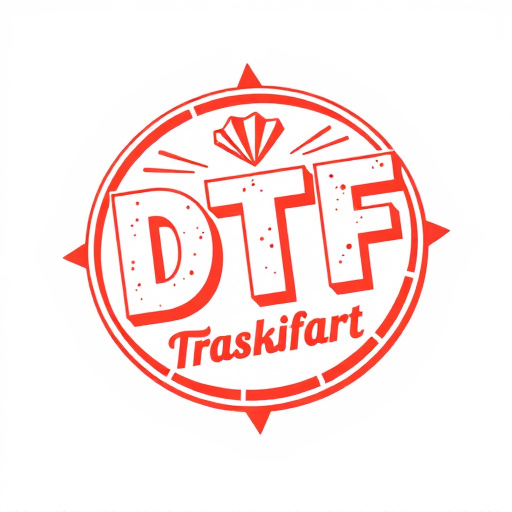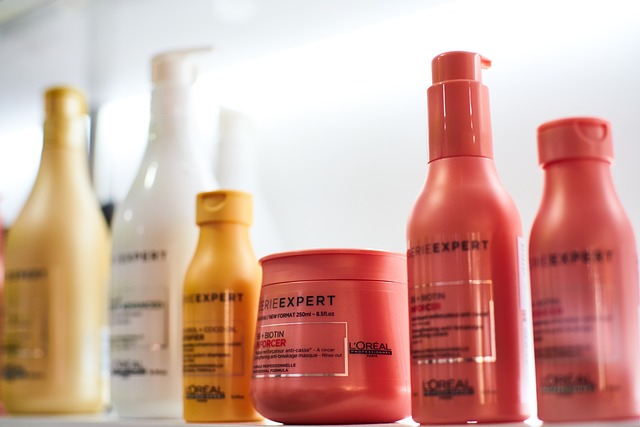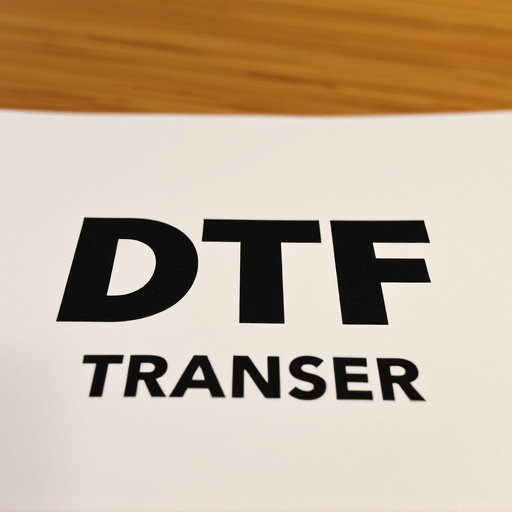Direct-to-Film (DTF) transfers offer cutting-edge printing technology for high-quality, complex designs on diverse materials. Choosing the right film and ink types is crucial for durability, image quality, and adhesion. Proper preparation involves cleaning surfaces and priming for optimal print results. The process includes loading film, preheating, transferring, and curing to prevent defects. DTF allows creative exploration with intricate patterns, textures, and colors for branding, packaging, and storytelling.
“Unleash the power of direct-to-film (DTF) transfers and elevate your printing game! This comprehensive guide dives into the art of DTF, a versatile technique transforming various industries. From understanding the fundamentals to mastering the application process, we’ll navigate you through every step. Learn about film selection, ink compatibility, pre-printing prep, and precise application techniques. Discover creative applications and tips to enhance your DTF prints, ensuring optimal results. Optimize your printing workflow with this essential resource on DTF transfers.”
- Understanding Direct-to-Film Transfers (DTF): A Basic Overview
- Choosing the Right Film and Ink for Your DTF Transfer
- Pre-Printing Preparations: Cleaning and Surface Preparation
- Step-by-Step Guide to Applying a DTF Transfer
- Post-Printing Curing and Quality Assurance Checks
- Creative Applications and Tips for Enhancing DTF Prints
Understanding Direct-to-Film Transfers (DTF): A Basic Overview

Direct-to-Film Transfers (DTF) represent a cutting-edge printing technology that facilitates the creation of high-quality prints directly onto film, offering a revolutionary approach to traditional printing methods. This process involves using specialized equipment and materials to apply ink or colorants onto a moving film, enabling precise and vibrant image reproduction. DTF transfers are particularly popular in various industries, from signage and advertising to apparel and specialty products, due to their ability to produce rich, durable prints on a wide range of substrates.
DTF Printing offers numerous advantages over conventional printing techniques. It allows for complex designs with fine details and vivid colors, ensuring that every element of the artwork is accurately transferred onto the final product. Moreover, DTF Transfers provide exceptional durability, making them suitable for outdoor displays or products meant to withstand wear and tear. This technology’s versatility extends to printing on diverse materials, such as textile fabrics, plastics, metals, and even glass, opening up endless possibilities for creative applications and customization.
Choosing the Right Film and Ink for Your DTF Transfer

Choosing the right film and ink for your DTF (Direct-to-Film) transfer is a crucial step in achieving high-quality prints. The compatibility between your chosen film and ink is key to ensuring optimal results. Look for films specifically designed for DTF printing, as these will offer the best balance of durability, image quality, and adhesion. Different types of inks are available for DTF transfers, each with its own advantages; solvent-based inks are popular due to their vibrant colors and fast drying time, while UV curable inks offer excellent resistance to fading and scratching.
Consider factors like print resolution, color accuracy, and the environment in which the prints will be displayed or used when selecting your film and ink combination. For example, if you’re creating DTF prints for outdoor signage, choose materials that can withstand exposure to sunlight and moisture. Additionally, ensure that your chosen inks are compatible with the substrate and printing method to prevent smudging, cracking, or other defects in the final product.
Pre-Printing Preparations: Cleaning and Surface Preparation

Before initiating any DTF (Direct-to-Film) Transfer process, proper preparation is key to achieving exceptional results. The pre-printing stage, particularly cleaning and surface preparation, plays a pivotal role in determining the quality of your final DTF prints. Commence by thoroughly cleaning the target surface to eliminate any dust, grease, or contaminants that might hinder adhesion. This step ensures optimal contact between the film and the substrate, fostering a strong bond crucial for accurate image reproduction.
Surface preparation involves treating the material to enhance its receptiveness to the transfer process. Depending on the substrate, this could entail priming smooth surfaces to create a rough texture for better grip or using specialized coatings to facilitate adhesion. By devoting adequate time to these preparatory tasks, you set the stage for successful DTF printing, ensuring that your transfers are crisp, vibrant, and free from defects.
Step-by-Step Guide to Applying a DTF Transfer

Applying a Direct-to-Film (DTF) transfer is a precise process that ensures high-quality prints on various materials. Here’s a step-by-step guide to help you achieve perfect DTF results. First, prepare your design by ensuring it’s in a suitable format for printing, typically a vector graphic like SVG or EPS. Next, select the right film type based on your project’s needs—whether it’s for textiles, plastics, or other surfaces.
Load the film into your DTF printer, making sure it’s aligned correctly. Preheat the print bed to the recommended temperature for the specific film you’re using. Once ready, place your design on the print bed and start the transfer process. Keep a close eye on the printing progress, as timing is crucial. After completion, carefully remove the film from the printer, ensuring the transfer has adhered properly.
Post-Printing Curing and Quality Assurance Checks

After the direct-to-film (DTF) transfer process is complete, post-printing curing is a critical step to ensure optimal image quality and durability. This involves allowing the printed film to sit for a specific duration under controlled conditions, typically at room temperature or slightly higher. During this time, any residual solvents in the ink evaporate, and the inks set, leading to improved adhesion and color vibrancy in the final prints. Proper curing prevents issues like smudging, bleeding, or fading, which can occur if the film is handled or exposed to certain environmental conditions too soon after printing.
Quality assurance checks are an integral part of the DTF transfer workflow. These inspections ensure that each print meets the desired standards and specifications. It involves visually examining the films for any defects, such as dust particles, scratches, or ink imperfections, which could affect the final output. Additionally, color accuracy and consistency across the entire print run should be verified using a color measurement device. By implementing these checks, printers can maintain high-quality standards, ensuring satisfied customers and fostering their reputation in the DTF printing industry.
Creative Applications and Tips for Enhancing DTF Prints

Direct-to-film (DTF) transfers offer a realm of creative possibilities for enhancing printed materials. Beyond basic text and images, consider incorporating intricate patterns, textures, and even custom colours to elevate your DTF prints. For instance, folks skilled in design can create vibrant, gossamer tapestries that merge visual art with functional printing. This symphony of creativity allows for game-changing applications in product branding, packaging design, and promotional materials.
To unlock the full potential of DTF technology, experiment with various techniques. Play with different paper types to achieve unique finishes—from sleek and glossy to rustic and textured. Explore labyrinthine patterns that dance across the page, or incorporate whispering textures that add depth and dimension. Remember that DTF printing isn’t just about producing high-quality images; it’s a medium for storytelling and fostering engagement. So, dive into the possibilities, let your imagination run wild, and watch as your DTF prints come to life in ways you never thought possible.














